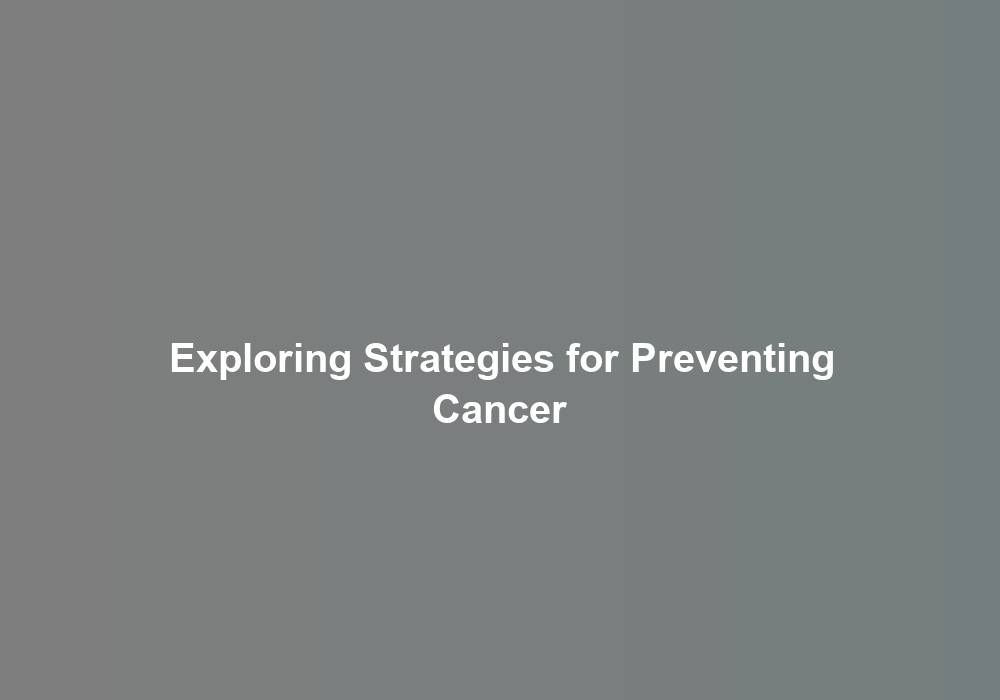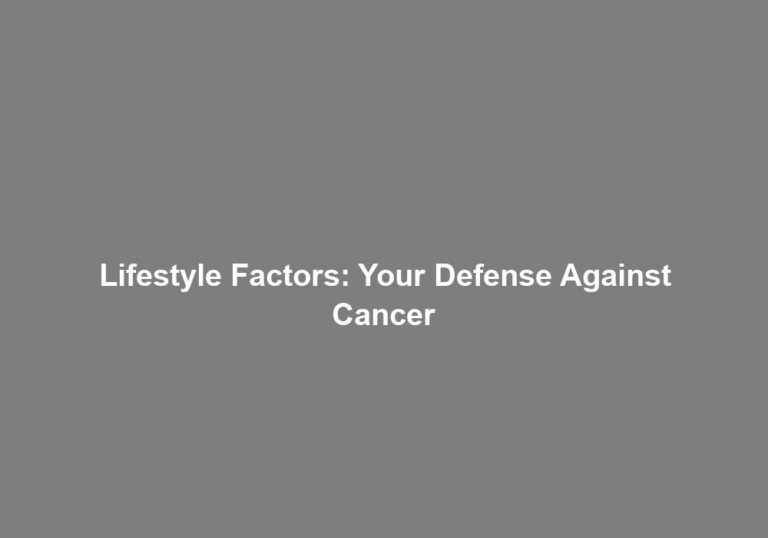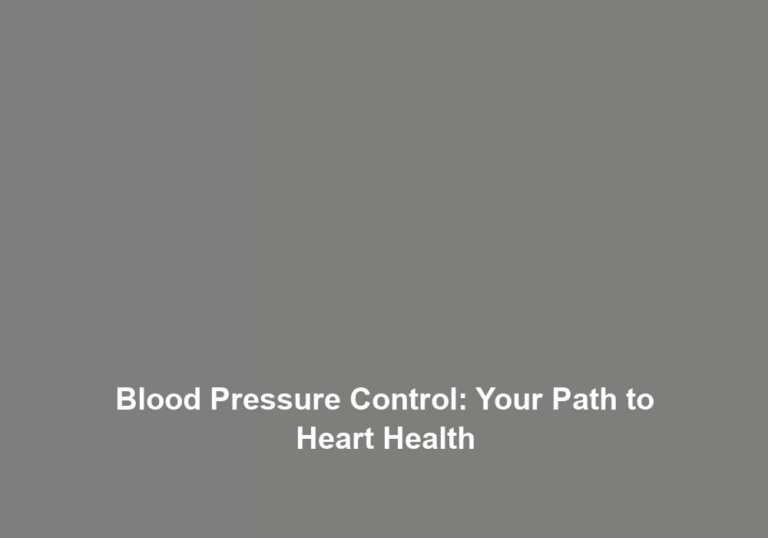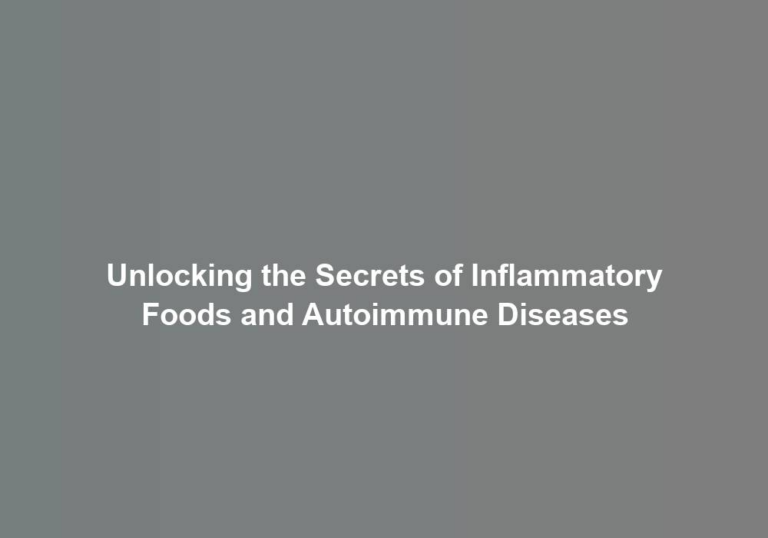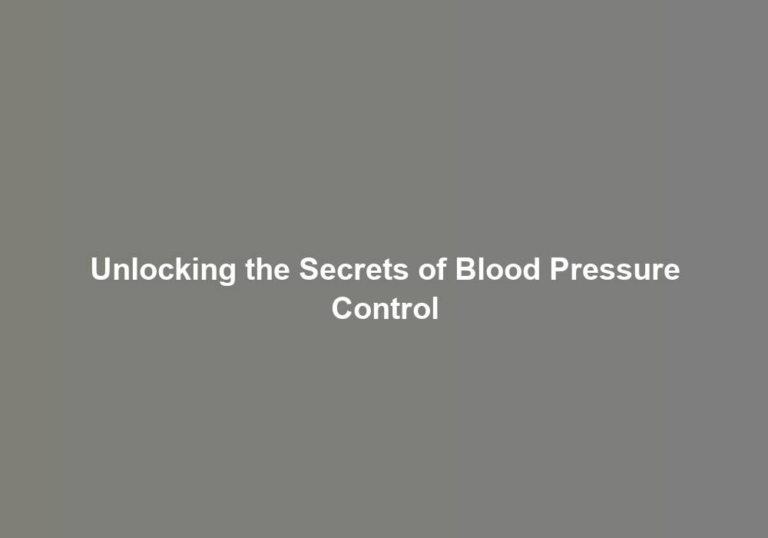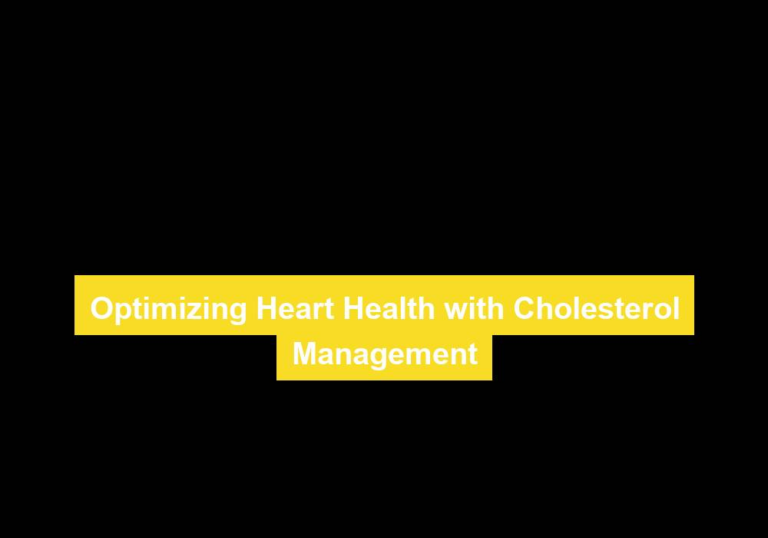Exploring Strategies for Preventing Cancer
You may feel overwhelmed by the juxtaposition of hope and fear when it comes to cancer prevention. ItG??s a topic that often leaves people wondering where to start and what steps to take. But fear not, because in this discussion, we will explore practical strategies and evidence-based approaches to help you navigate the complex landscape of cancer prevention. By the end, youG??ll have a clearer understanding of how to take proactive steps towards reducing your risk of cancer and promoting overall well-being.
Understanding Risk Factors
Understanding the risk factors associated with cancer is crucial for implementing effective prevention strategies. One significant risk factor is genetic predisposition. Research has shown that individuals with certain genetic mutations have a higher likelihood of developing specific types of cancer. For example, individuals with mutations in the BRCA1 and BRCA2 genes have an increased risk of developing breast and ovarian cancer. By understanding oneG??s genetic predisposition to cancer, individuals can make informed decisions about proactive measures such as increased surveillance or preventive surgeries.
Another essential risk factor for cancer is lifestyle. Making lifestyle modifications can significantly reduce the risk of developing cancer. For instance, adopting a healthy diet rich in fruits, vegetables, and whole grains while minimizing processed and red meat consumption can lower the risk of developing various types of cancer. Additionally, engaging in regular physical activity has been shown to decrease the risk of certain cancers such as colon and breast cancer. Avoiding tobacco and limiting alcohol consumption are also crucial lifestyle modifications for cancer prevention.
Understanding these risk factors empowers individuals to make informed choices that can positively impact their risk of developing cancer. By being aware of genetic predisposition and implementing lifestyle modifications, individuals can take proactive steps towards reducing their cancer risk and promoting overall well-being.
Implementing Healthy Lifestyle Choices
To effectively implement healthy lifestyle choices for cancer prevention, individuals should prioritize dietary improvements and regular physical activity, as these have been shown to significantly reduce the risk of developing various types of cancer.
When it comes to exercise habits, engaging in at least 150 minutes of moderate-intensity exercise or 75 minutes of vigorous-intensity exercise per week is essential for cancer prevention. This could include activities such as brisk walking, swimming, cycling, or jogging. Additionally, incorporating strength training exercises at least two days per week can further enhance the benefits of physical activity in reducing cancer risk.
Nutritional intake plays a crucial role in cancer prevention. Consuming a diet rich in fruits, vegetables, whole grains, and lean proteins while limiting processed foods, red meat, and sugary beverages can contribute to a lower risk of developing cancer. It is also important to maintain a healthy weight, as obesity has been linked to an increased risk of several types of cancer.
Incorporating these lifestyle changes can be challenging, but finding a supportive community or joining group fitness classes can provide a sense of belonging and motivation to stick to these healthy habits. Making these changes may seem daunting, but the impact on cancer prevention is substantial. By prioritizing exercise habits and nutritional intake, individuals can take proactive steps in reducing their risk of cancer and promoting overall well-being.
Importance of Regular Screenings
You need to understand that early detection of cancer through regular screenings has been proven to save lives. By adhering to screening guidelines and frequency, you can significantly increase the chances of detecting cancer in its early, more treatable stages. Access to screening programs is vital in ensuring that individuals have the opportunity to undergo regular screenings, leading to better outcomes in the fight against cancer.
Early Detection Saves Lives
Regular screenings play a crucial role in the early detection of cancer, significantly increasing the chances of successful treatment and survival. Research indicates that early diagnosis leads to better outcomes, making it imperative to prioritize regular screenings. HereG??s why:
- Timely Intervention: Early detection allows for prompt medical intervention, potentially preventing the progression of cancer.
- Improved Treatment Options: Identifying cancer in its early stages provides a wider range of treatment options, often less invasive and more effective.
- Enhanced Survival Rates: Early detection is associated with higher survival rates, offering individuals the best chance at a positive prognosis.
- Reduced Healthcare Costs: Detecting cancer early can lead to reduced treatment expenses, minimizing the financial burden on individuals and healthcare systems.
Screening Guidelines and Frequency
Screening guidelines and frequency play a pivotal role in the early detection and management of cancer, ensuring timely identification and intervention for optimal patient outcomes. Age recommendations and frequency of screenings are determined based on evidence-backed data to maximize efficacy and cost-effectiveness. For instance, guidelines often recommend regular mammograms for women over the age of 50, as this age group has a higher risk of breast cancer. These recommendations are based on extensive research that demonstrates the benefits of early detection in improving treatment outcomes. Moreover, adhering to these guidelines ensures that resources are utilized efficiently, minimizing unnecessary screenings while targeting high-risk populations. By following the recommended screening guidelines and frequency, individuals can significantly improve their chances of detecting cancer at an early, more treatable stage.
Access to Screening Programs
Accessing screening programs is critical for ensuring timely detection and intervention, thereby building upon the foundation of evidence-backed guidelines and frequency recommendations. Regular screenings offer a proactive approach to cancer prevention, allowing for early identification of abnormal changes and prompt treatment. When considering access to screening programs, it is essential to address equity in access to ensure that all individuals have an equal opportunity to benefit from these essential preventive measures. Outreach initiatives play a pivotal role in reaching underserved communities and promoting awareness about the importance of regular screenings. By facilitating access to screening programs and fostering a sense of inclusivity, we can collectively work towards reducing the burden of cancer and promoting overall well-being.
Dietary Recommendations for Cancer Prevention
Implementing a balanced and varied diet, rich in fruits, vegetables, whole grains, and lean proteins, is a fundamental strategy for reducing the risk of developing cancer. Plant-based diets, in particular, have been associated with a lower risk of various types of cancer. These diets typically include high amounts of fiber, vitamins, minerals, and phytochemicals, all of which play crucial roles in cancer prevention. Antioxidant-rich foods, such as berries, spinach, and nuts, can also help protect cells from damage that may lead to cancer.
| Dietary Component | Role in Cancer Prevention | Food Sources |
|---|---|---|
| Fiber | Aids in digestion and reduces the risk | Whole grains, fruits, vegetables |
| of colorectal cancer | ||
| Vitamins and | Support the immune system and help | Citrus fruits, leafy greens, nuts, |
| Minerals | prevent DNA damage | seeds |
| Phytochemicals | Act as antioxidants and have anti- | Berries, cruciferous vegetables, |
| inflammatory properties | soy products |
When constructing your meals, aim to incorporate a variety of these components. For example, you might start your day with a bowl of oatmeal topped with berries and nuts, have a salad with leafy greens and a mix of colorful vegetables for lunch, and include a side of quinoa and steamed broccoli with your dinner. By focusing on a diet rich in these cancer-fighting nutrients, you can take proactive steps to reduce your risk of developing cancer.
Environmental and Occupational Precautions
To minimize your risk of cancer, it is essential to be aware of and take precautions against potential environmental and occupational carcinogens. Environmental regulations and workplace safety measures play a crucial role in reducing exposure to cancer-causing agents.
-
Environmental Regulations: Adhering to environmental regulations is vital in preventing exposure to hazardous substances. These regulations are designed to control and minimize the release of carcinogens into the environment, thus reducing the risk of exposure for individuals.
-
Workplace Safety: Ensuring workplace safety is paramount for preventing occupational exposure to carcinogens. This includes proper ventilation, the use of personal protective equipment, and adherence to safety protocols when handling potentially hazardous substances.
-
Risk Assessment: Conducting regular risk assessments in both the environmental and occupational settings can help identify potential sources of carcinogen exposure. This allows for the implementation of targeted preventive measures to minimize risk.
-
Education and Training: Providing comprehensive education and training on the identification and handling of carcinogens is essential for raising awareness and promoting safe practices in both the environmental and occupational contexts.
Promoting Awareness and Education
To effectively prevent cancer, it is crucial to promote awareness and education about the risk factors and preventive measures. By educating individuals about lifestyle choices, environmental exposures, and early detection methods, we can empower them to make informed decisions that reduce their cancer risk. Spreading awareness about the importance of regular screenings and healthy habits can significantly contribute to the prevention and early detection of cancer.
Education for Prevention
Utilize evidence-based educational campaigns to increase public awareness of cancer prevention strategies and promote proactive health behaviors. Education for prevention plays a crucial role in promoting behavioral change and fostering community outreach efforts. To effectively achieve these goals, consider the following strategies:
- Implement targeted educational programs in schools and workplaces to instill healthy habits from an early age.
- Utilize social media platforms to disseminate accurate information about cancer prevention and healthy lifestyle choices.
- Collaborate with local healthcare providers to offer educational workshops and seminars in community centers.
- Develop culturally sensitive educational materials to ensure inclusivity and reach diverse populations.
Spreading Awareness
Spreading awareness about cancer prevention and education is a critical component in fostering informed decision-making and proactive health behaviors within communities. Raising funds for cancer awareness programs and involving the community in these initiatives is essential for their success. Studies have consistently shown that education and awareness programs can lead to earlier detection of cancer, better adherence to preventive behaviors, and improved health outcomes. Community involvement in spreading awareness can create a sense of belonging and shared responsibility, fostering a supportive environment for those affected by cancer. By actively participating in awareness campaigns and fundraising efforts, individuals can contribute to the dissemination of accurate information and resources, ultimately empowering communities to make informed decisions about cancer prevention and early detection.
Conclusion
In conclusion, it is crucial to be proactive in reducing your risk of cancer by understanding and addressing risk factors, making healthy lifestyle choices, and getting regular screenings. By taking these precautions, you can significantly decrease your chances of developing cancer. Remember, prevention is always better than cure, and by taking these steps, you are building a strong defense against this formidable opponent.

